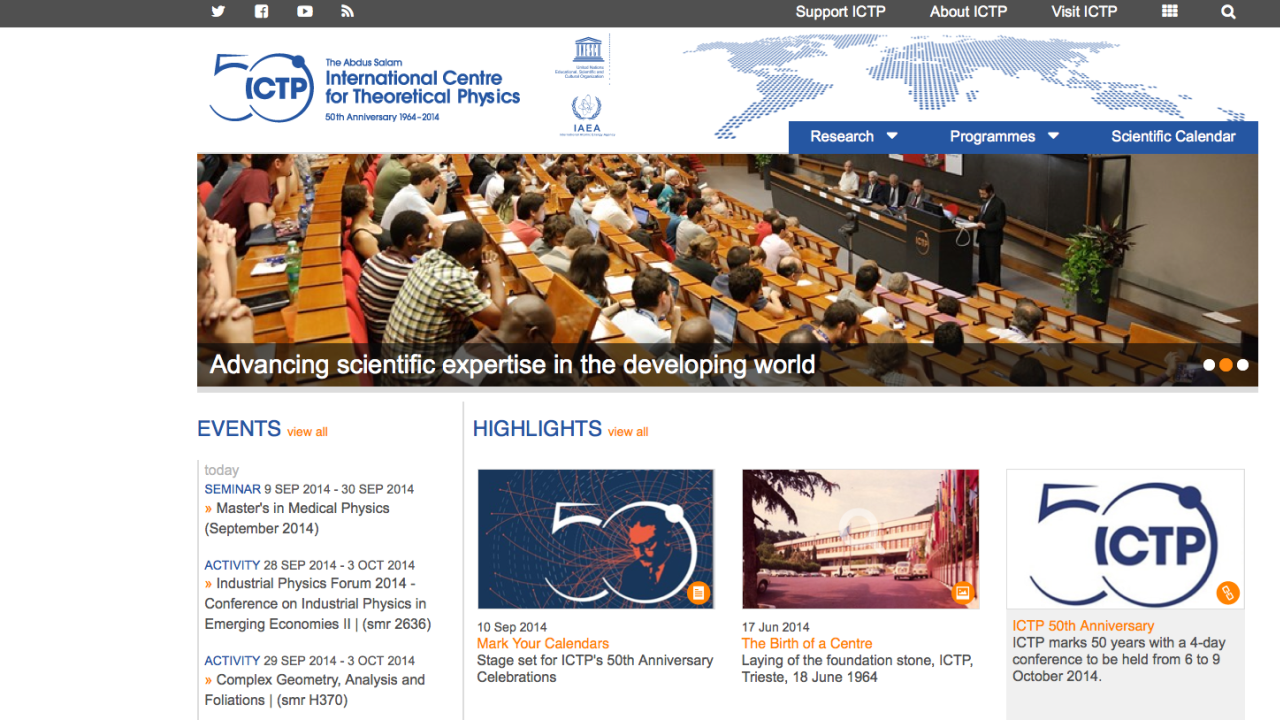
The devastating April 2015 Nepal earthquake that killed thousands of people underscored, among many other issues, the importance of understanding the Earth's geological and geophysical processes. The region has been the focus of ongoing, collaborative research between ICTP's Earth System Physics (ESP) section and Tribhuvan University on the seismic hazards of the Himalayas. Within hours after the temblor, the Centre had reached out to its Kathmandu colleagues with offers of training and research support.
One immediate, scientific need was to investigate the nature of the ongoing, strong aftershocks. Scientists know that the southern part of the fault that lies beneath the Kathmandu region did not rupture during the April event; could the continued tremors indicate that Nepal is headed for another killer quake?
To find out, ESP geophysicist Karim Aoudia coordinated with Tribhuvan University Professor Bishal Upreti to donate permanent GPS instruments that can monitor Nepal's post-seismic deformation. The equipment arrived just four days after the 25 April earthquake, thanks to the assistance of the UNESCO field office in Kathmandu. What the instruments have detected so far will be one of the topics discussed at the "International Workshop on Nepal (Gorkha) Earthquake 2015: Present knowledge and way forward on future research", meeting from 17 to 18 June 2015.
Aoudia leads ICTP's geophysics research and has years of experience training scientists from earthquake-prone areas in the developing world. From North Africa to the Middle East and now to the Himalayas and Tibet, Aoudia coordinates ongoing research projects involving PhD students in order to build networks and improve knowledge.
For the Nepal workshop, the aim is similar. "Our role is to share with the Nepalese community the most up-to-date science results on the earthquake and its evolution in time and space, and to discuss this within an international framework," says Aoudia. He explains that the monitoring instruments that ICTP sent in April are now spread out in the epicentral area in the framework of a large collaborative project involving universities from the US and the UK. Powered by solar energy, the instruments are networked and transfer datasets in real time to a central office at Tribhuvan University. This data and more will be discussed at the June workshop, organized by ICTP and the Nepal Academy of Science and Technology.
In addition to coordinating training and monitoring activities, Aoudia has mentored five Nepal students through ICTP's Postgraduate Diploma Programme. All are now enrolled in top universities pursuing their PhD, with one finishing his PhD in seismology in a few weeks from the Australian National University in Canberra.
















